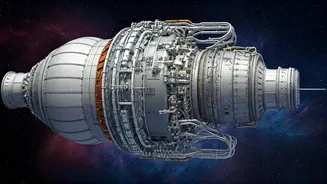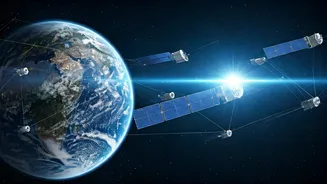Budget Cuts Loom
NASA is currently grappling with a challenging financial climate, a situation that has prompted considerable concern among both its workforce and members
of Congress. There have been visible protests against planned mass layoffs and reductions in scientific programs. These cutbacks are occurring as the agency reassesses its priorities, with a notable shift away from climate science research in favor of lunar and Martian exploration. This strategic realignment has generated worries about the potential loss of vital expertise and the long-term impacts on the agency's scientific capabilities. The financial strain is also affecting the Office of Space Commerce, which is facing an uncertain future. These developments have triggered a wave of reactions within the scientific community and among those who advocate for the continued advancement of space exploration and scientific discovery, suggesting that the budget issues will continue to be a subject of intense debate and negotiation.
Shifting Priorities Emerge
Simultaneously, a transformation in NASA's focus is underway. The acting administrator has signaled a strategic pivot away from climate science, redirecting resources towards the exploration of the Moon and Mars. This decision has sparked debate regarding the balance between various scientific pursuits. Critics argue that diverting funds from climate-related research could undermine important progress in understanding Earth's environment. At the same time, this strategic shift indicates a renewed commitment to ambitious space exploration missions. The upcoming missions, such as those to Mars, and the collaboration with international partners, are central to NASA's future endeavors. These missions will seek to unravel mysteries and gather crucial data about the Red Planet's atmosphere, its potential habitability, and more. This strategic reshuffling is setting the stage for long-term objectives that will shape the course of space exploration in the years to come.
Mars and Moon Focus
NASA's sights are now firmly set on both the Moon and Mars, signaling a major strategic focus. The agency's commitment to lunar exploration is underscored by the Artemis program, and the new Mars missions aim to study the Red Planet's environment. These missions offer a chance to explore new technologies and scientific breakthroughs. This dual focus highlights NASA's ambition and dedication to exploring the solar system's planets. The Moon is being viewed as a crucial testbed for establishing infrastructure and practicing complex maneuvers before venturing further into deep space, while Mars represents the ultimate goal of the agency's human exploration aspirations. The success of these missions will depend on international collaboration, technological advancements, and the commitment of space professionals. Ultimately, these missions are driving a new era in space exploration, promising fresh scientific discoveries and the potential for a deeper understanding of the universe.
International Collaboration
NASA is actively involved in international cooperation, including seeking to avoid a potential satellite collision with China. This collaboration reflects the shared interest in responsible space activities and the safety of space assets. These initiatives highlight the growing interconnectedness of space exploration, with nations working together on missions and projects. These efforts bring together the collective resources, expertise, and perspectives of various space agencies, creating an environment that is conducive to innovation and discovery. By embracing collaboration, NASA can enhance its ability to reach its goals. These international partnerships represent a collaborative path for space exploration, and these ties will shape the space landscape in the years ahead.
Uncertain Future
As NASA navigates budget cuts and shifts in strategic objectives, the agency's future faces certain uncertainty. Layoffs, program cutbacks, and changes in scientific priorities all raise questions about the long-term impact on the agency's capabilities and its ability to achieve its goals. NASA's ability to maintain its leadership and remain at the forefront of space exploration will depend on resolving budget constraints, adapting to changing priorities, and continuing to inspire the public. The decisions made in the coming years will have far-reaching implications for space exploration and the scientific community. The need to balance competing priorities, secure funding, and maintain the support of Congress and the public will be crucial to securing the future of the agency and its ongoing mission to explore the cosmos.











